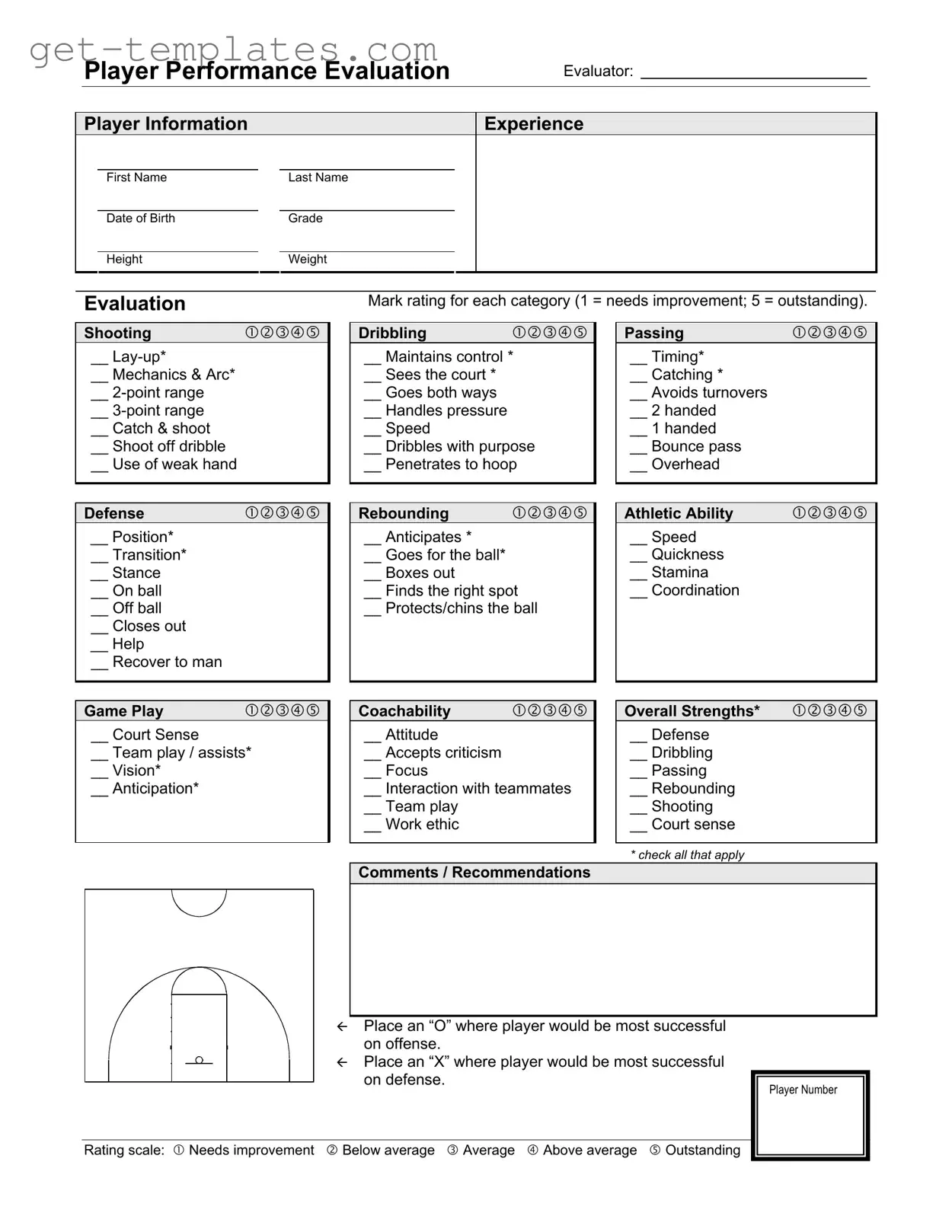The Basketball Evaluation form is designed to assess a player's skills and performance in various aspects of the game. It helps coaches and evaluators identify strengths and areas for improvement. This structured evaluation can guide training and development, ensuring that players receive the support they need to enhance their abilities.
Coaches, trainers, or evaluators with experience in basketball should complete the form. They will provide an objective assessment of each player's skills based on their observations during practices and games. This ensures that the evaluation is fair and accurate, reflecting the player's true capabilities.
What categories are included in the evaluation?
The evaluation covers several key categories:
-
Shooting
-
Defense
-
Dribbling
-
Rebounding
-
Passing
-
Athletic Ability
-
Game Play
-
Coachability
Each category has specific skills that evaluators will rate on a scale from 1 (needs improvement) to 5 (outstanding).
How should evaluators use the rating scale?
Evaluators should use the rating scale to assess each skill within the categories. A score of 1 indicates that the player needs significant improvement, while a score of 5 signifies outstanding performance. This consistent rating system allows for easy comparison and tracking of player development over time.
Evaluators can provide comments and recommendations based on their observations. This may include specific areas for improvement, suggestions for drills, or feedback on the player's attitude and teamwork. Such insights can be invaluable for both players and coaches in planning future training sessions.
How can the evaluation help in player development?
The evaluation serves as a roadmap for player development. By identifying strengths and weaknesses, coaches can tailor practices to address specific needs. Players can focus on improving their skills in targeted areas, leading to overall enhancement of their game. Additionally, it fosters open communication between players and coaches regarding performance expectations.
Is there a way to track progress over time?
Yes, the Basketball Evaluation form can be used periodically to track a player's progress. By conducting evaluations at different points in the season or over multiple seasons, coaches can compare results and see how a player has improved. This ongoing assessment helps ensure that training remains relevant and effective.

